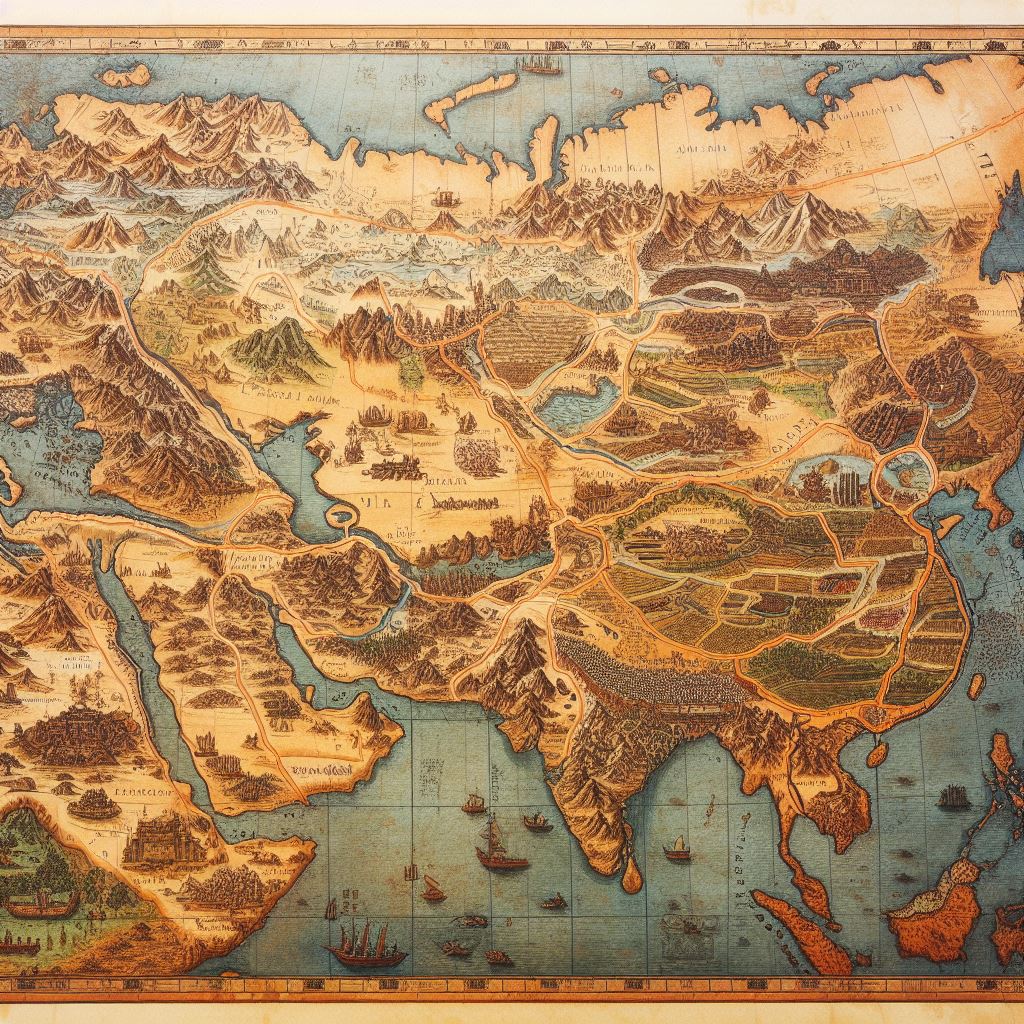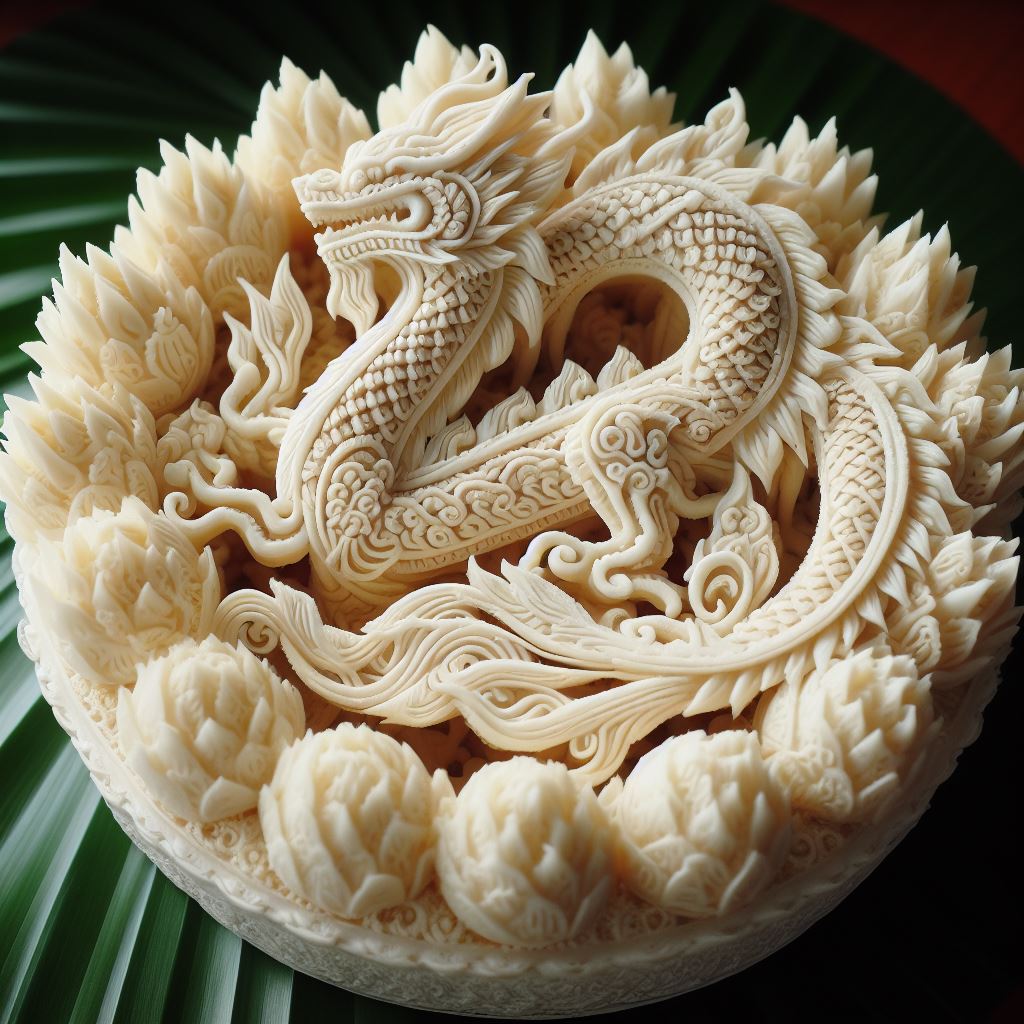Introduction
Fun facts about rice – who knew this ubiquitous grain had so much intrigue behind it? Rice has shaped cultures and fueled civilizations for thousands of years. Grab a bowl of the good stuff and keep reading to uncover 20 fascinating tidbits about the epic history of rice.
From ancient rice paddies carved into the mountains of China to modern high-tech rice mills, rice has been an integral part of human civilization for thousands of years. As one of the most widely consumed cereal grasses on Earth, providing over 20 percent of the world’s dietary caloric intake, rice is a true staple crop that feeds billions.
But how much do we really know about this ubiquitous grain? Beyond being a versatile, nutritious food source, rice has a rich backstory.
Over the centuries, rice has shaped cultures, fueled economies, and anchored entire cuisines across Asia and beyond. The humble rice plant contains hidden wonders—from secret stair-stepped fields that double as art to the creation of rice wine, a drink with over 9,000 years of history!
Rice offers more than nourishment; it provides insights into humanity. By understanding the origins, agriculture, and diverse uses of rice, we better understand ourselves. From India’s fragrant basmati rice to Japan’s sticky mochi treat, rice reflects regional identities.
In this article, we will explore some fascinating facts about rice and how it has transformed societies. We’ll learn about the deceptively complex process of cultivating rice, its status as an honorary deity, and unique heirloom varieties.
We’ll also uncover the critical role rice played in fueling civilizations throughout Asia. Reading on, you’ll find that this seemingly ordinary staple food contains hidden depths. Our journey into the world of rice will uncover culture, history, agriculture, and more along the way.
![Fun Facts About Rice: Uncovering 20 Fascinating Tidbits on this Grain's History [Updated 2023]](https://factnight.com/wp-content/uploads/2023/11/Fun-Facts-About-Rice-Uncovering-20-Fascinating-Tidbits-on-this-Grains-History-Updated-2023-2.jpeg)
So join us as we discover what makes rice far more than just a mealtime side—it is an edible time capsule of humanity itself. From artistic terraced paddies to traditional rice ball snacks, prepare to be amazed by rice!
History and Origin
The story of rice begins over 8,000 years ago in the Pearl River valley of China, where wild strains of the grass Oryza were first cultivated into the crop we now know as Asian rice. This momentous event occurred around 6,000 BC, marking the start of the agricultural revolution in ancient China.
Rice cultivation slowly spread south into mainland Southeast Asia, likely hybridizing with other wild rice strains along the way. Ancient Chinese manuals instructing proper rice planting and irrigation started appearing around 500 BC. Farmers grew rice in flooded paddies, and water buffalo pulled plows to till the soil.
From China, rice farming disseminated along trade routes like the Spice Route and Silk Road. Rice arrived in ancient Greece and Persia around 300 BC and India by 100 BC. Rice cultivation came late to Japan around 100 AD, where wet rice agriculture transformed social structures.
Africans likely domesticated their own rice varieties 3,000 years ago. Enslaved Africans brought rice cultivation expertise to the American colonies in the 17th century. Carolina Gold rice fueled the plantation economy until the Civil War.
Meanwhile, rice took root in Southern Europe starting in the 8th century when the Moors introduced irrigation techniques. Today, short-grained Arborio rice is indispensable for creamy Italian risotto.
Overall, rice has followed a trajectory mirroring human migration and civilization. Through colonial empires, the transoceanic slave trade, and 20th century globalization, rice has achieved near ubiquity as a dietary staple and pillar of cuisines across the world.
From the terraced rice paddies of Bali shaped like artistic stair steps to the biryani masalas of India infused with spices, rice is now integral to cultures and economies worldwide. Though details differ across regions, rice remains vital to billions.
Understanding the plant’s grassroots origins and global spread also reveals humanity’s shared history. Rice touches all aspects of society—economics, agriculture, technology, religion—forming common threads that transcend borders.
So next time you enjoy fluffy basmati rice or crispy Indonesian nasi goreng, remember the epic journey rice has made over thousands of years to arrive on your plate!

Cultural Significance
Beyond being a dietary staple, rice holds deep cultural meaning and value across many Asian societies. Since rice was first domesticated in China thousands of years ago, it has become deeply ingrained in food culture, religion, and art.
Cuisines – Rice forms the foundation for many classic Asian cuisines. In China, rice is so ubiquitous that the word for rice, fan, also means “meal.” Iconic Chinese dishes likeclaypot rice, fried rice, congee, and zongzi rice dumplings revolve around rice. Japanese cuisines also rely on rice as both a savory dishes like onigiri and sweet mochi treats.
Meanwhile, Indian cuisine employs aromatic basmati rice in biryani, pulao, and more. Rice noodles and rice paper feature heavily in Southeast Asian food like Vietnamese pho and Malaysian nasi lemak. Simply put, rice defines Asian food culture.
Religion – Rice has long held sacred meaning in Asia. In Bali, the native Dewi Sri is the goddess of rice, symbolizing fertility and prosperity. Annual rituals celebrate Dewi Sri to honor the rice harvest. Rice offerings also play a role in Hindu and Buddhist traditions.
Festivals like Thailand’s Royal Ploughing Ceremony begin the planting season with rice rituals. Vibrant Dragon Boat Festivals held throughout Asia, from China to Vietnam, commemorate folk rice tales.
Artforms – Sculptures and design motifs in Asia highlight rice. Delicate rice flour art decorates cakes and pastries. Rice straw crafts various objects. More abstractly, rice terraces echo sweeping brushstroke paintings, representing humans living in harmony with nature.
Architecture integrates rice too. Bali’s famed Subak irrigation system comprises tunnels and aqueducts to direct flowing water to and from rice fields. This engineering marvel, dating back to the 9th century, doubles as sculpture.
Clearly, rice is more than food – it is the lens through which many Asian cultures see the world. From aesthetic beauty to religious awe, rice permeates the collective consciousness. Understanding how rice permeates Asian worldviews, traditions, and arts is key to cross-cultural exchange in our global community.

Types of Rice
With over 40,000 varieties of rice in the world, ranging in size, shape, color, aroma, and more, it helps to learn the major categories. Here are some key types of rice and their qualities:
Long Grain vs Short Grain
The main distinction is the length-to-width ratio of the rice kernels.
Long grain rice like basmati or jasmine has a longer, thinner kernel 4-5x as long as wide. The grains remain separate and fluffy when cooked.
Short grain rice has a shorter, wider kernel only 2-3x as long as wide. The starchier grains cling together more. Japanese sushi rice is a classic example.
Aromatic Rice
Aromatic or fragrant rices like jasmine and basmati contain pleasing fragrances and flavors.
- Jasmine rice offers a floral aroma and slightly sweet taste. It is popular in Thai cuisine.
- Basmati rice has a nutty, popcorn-like fragrance. It is central to Indian dishes like biryani.
Colored Rice
Beyond white and brown rice, there are heirloom pigmented rices:
- Black rice kernels are deep purple-black. They have an earthy, sweet flavor when cooked.
- Red rice ranges from light red to maroon kernels. It has a slightly nutty taste.
- Golden/yellow rice is creamy white to golden in color with a delicate, corn-like flavor.
Specialty Rice
Some rices have unique properties:
- Sticky (glutinous) rice is very starchy and clingy when cooked. It is popular in desserts.
- Wild rice is an aquatic grass native to North America, not true rice. It has a distinct earthy flavor.
- Wehani rice is an aromatic brown rice that maintains its nutty aroma even when cooked.
- Forbidden rice (Chinese black rice) turns purple when cooked. It has a sweet, nutty taste.
With this crash course in rice types, you can better navigate the shelves when cooking ethnic cuisine or special dishes! The versatility of rice stems in part from its diverse varieties.
Rice Production and Processing
To better appreciate each grain of rice, it helps to understand the traditional processes behind rice cultivation and preparation. Here is an overview of key stages in producing the rice that ends up on our plates:
Planting Rice Paddies
Rice is grown in flooded paddy fields to control weeds and provide water. Farmers prepare the land by plowing and leveling the fields. Rice seedlings are started in nurseries then transplanted to paddies. Fields are flooded just before planting. Farmers keep fields flooded until 2-3 weeks before harvest.
Supplemental irrigation through canals, dams, and aqueducts provides water to flood the terraced paddies. Asia’s ancient Subak system in Bali is a masterpiece of water engineering enabling rice cultivation in terraces.
Harvesting Rice
Once rice plants have matured and grains hardened after ~110 days, fields are drained in preparation for harvest. Harvesting methods vary by region, scale, and technology level. Sickles or scythes are used for small plots. Larger operations use specialized rice harvesting machines.
Stalks are cut, bundled, and left to dry in the sun for 1-2 weeks. Grains are separated from stalks by threshing – beating the stalks to loosen grains. Winnowing then separates the chaff from grains.
Milling and Processing
To produce white rice, the hull and bran layers around each grain must be removed by milling. First, paddy rice passes through a husker to remove hulls. Next, the brown rice enters a polishing mill to gently buff away the bran. Advanced milling technology helps optimize processing.
Milling results in rice bran and broken rice byproducts often used to produce rice milk and rice flour. Finally, processing enriches white rice with added vitamins. Enriched white rice offers shelf life up to two years unopened.
Seeing the intensive handiwork and regional knowledge involved in raising each crop gives new appreciation for a bowl of perfectly fluffy rice grains. From seamlessly engineered paddies to high-tech processing methods, human skill enables rice to nourish billions.
Cooking with Rice
Rice’s versatility as an ingredient comes from the many methods of preparation across world cuisines. Here are some top ways rice is cooked and incorporated into delicious dishes:
Preparation Methods
- Steaming rice in a perforated basket yields light, fluffy grains perfect for serving. Rice cookers automate steaming.
- Boiling rice immersed in water produces tender, wet grains well-suited for risottos, pilafs, and stir fries.
- Stir-frying rice in oil makes the grains evenly coated and adds flavor from aromatics. Great for fried rice.
- Baking rice in the oven gives rice a toasted flavor and chewy texture. Ideal for rice pilafs.
Signature Rice Dishes
- Sushi and onigiri – Steamed Japanese rice seasoned with vinegar and formed into bite-sized pieces.
- Risotto – Italian short grain rice like Arborio slowly simmered in broth to a creamy texture.
- Biryani – Fragrant Indian rice layered with spices, meat/veggies, then steamed.
- Congee – Chinese rice porridge made from boiling rice in excess water until thickened. Often garnished.
- Nasi goreng – Indonesian fried rice loaded with meats, shrimp, veggies, kecap manis, and a fried egg.
Rice Products
- Rice noodles – Thin or wide noodles made from rice flour popular in Asian cuisines.
- Rice paper – Thin, edible sheets made of rice flour used for spring rolls, dumplings.
- Rice wine – Varies by region but involves fermenting steamed rice into alcoholic beverages like sake or huangjiu.
Rice is incredibly versatile as an ingredient, with each culture unlocking new possibilities through cooking techniques. Steaming, frying, simmering – rice transforms into staple dishes across the globe.
Nutrition and Health
Beyond its rich cultural history, rice provides essential sustenance to billions worldwide. Understanding its nutritional profile equips us to incorporate rice into a balanced diet.
Nutrients
Rice is primarily a high-quality carbohydrate. One cup of cooked white rice provides about:
- 200 calories
- 44g of carbs
- 4g protein
- Small amounts of B vitamins and minerals like iron, manganese, selenium
The carb content makes rice an excellent energy source. The protein, while modest, complements plant- or meat-based meals. Rice is naturally gluten-free.
Enriched white rice adds:
- Thiamin, niacin, iron, folic acid – Helps address deficiencies in cultures relying on rice.
Concerns
Arsenic – Rice absorbs arsenic more readily than other grains, requiring monitoring of soil/water used for cultivation.
Low fiber – The milling process removes rice’s outer bran layer, a useful source of fiber. Brown rice retains more fiber.
High glycemic index – The carbs in white rice digest quickly, spiking blood sugar. Added fat/protein helps regulate energy release.
Health Benefits
- Heart health – Rice bran oil contains phytosterols that lower LDL cholesterol.
- Cancer prevention – Rice bran contains antioxidants like ferulic acid shown to slow tumor growth.
- Gluten-free – Rice lacks gluten, offering a carb alternative for celiacs/gluten intolerants.
- Prebiotic – The resistant starch in rice feeds gut microflora, promoting digestive health.
Rice is a nutritious base that feeds much of the world. Monitoring cultivation practices and pairing rice with fiber, protein and veggies helps unlock its potential as a healthy carb. After all, billions have thrived on rice-based diets for millennia. With sound practices, rice continues to nourish populations and cultures worldwide.
Conclusion
Our journey through the world of rice has uncovered some amazing insights. From its ancient beginnings in Asia to its modern role feeding billions worldwide, rice has a rich backstory.
We discovered rice’s 8000-year-old origins starting in China’s Pearl River valley. Early irrigation and farming techniques enabled rice to spread along the Spice and Silk Road trade routes to Europe, Africa, and the Americas.
Rice took on deep cultural meaning across Asia, anchoring cuisines, artwork, and spiritual traditions. The spectrum of rice varieties we enjoy today mirrors this global reach, from fragrant Indian basmati to sweet sticky rice treats.
Behind the scenes, growing rice requires complex irrigation systems and intensive labor from planting to harvest. Highly mechanized milling methods transform hardy brown grain into the white rice that graces billions of plates daily.
Rice remains a dietary staple providing carbohydrate energy to fuel lives, though concerns about arsenic require ongoing oversight in cultivation.
Stepping back, we recognize rice as much more than a grain. It is interwoven with humanity’s history. Rice cultivation enabled societies to expand and civilizations to flourish.
While we in the modern world may take rice for granted, it has been an agent of social change for millennia. Rice’s portability, storability, and versatility as an ingredient fundamentally altered what was possible for humankind.
So next time you enjoy a bowl of creamy risotto or perfectly steamed basmati, consider the fascinating story it represents. Rice witnesses exchanges of culture, technology, and ideas across our shared human experience. It accompanies us through history – 10,000 years and counting.
That is the joy of understanding a common food like rice more deeply. It connects us to the past, and to each other.
Fun Facts About Rice: Answering Common Questions
Rice has an incredible history behind it. This ancient grain fuels cultures across the globe. If you want to dig deeper into rice, here are answers to some frequently asked questions.
Q: Where did rice originally come from?
A: Rice first originated around 6,000 BC in the Yangtze River valley of China. From here, rice cultivation spread through Asia along trade routes.
Q: How many types of rice are there?
A: There are over 40,000 varieties of rice worldwide! Major types include long grain, short grain, basmati, jasmine, black rice, and sticky (glutinous) rice.
Q: Why is rice so important to Asian cultures?
A: Rice cultivation shaped many aspects of Asian societies. Rice features heavily in cuisine, spiritual ceremonies, architecture, and artforms across the region.
Q: How is rice grown?
A: Rice is grown in flooded paddies and terraces. After maturation, rice is harvested by hand or machine. Proper irrigation engineering enables rice farming.
Q: How is rice processed into the white rice we eat?
A: After harvest, rice undergoes milling to remove the hull and bran layers. This produces the polished white rice grains sold commercially.
Q: What is the nutritional value of rice?
A: Rice is rich in carbohydrates, providing calories for energy. It also contains smaller amounts of protein, vitamins, and minerals. Concerns include arsenic and low fiber.
Q: How do different cultures cook rice?
A: Rice preparation varies widely – common methods include steaming, boiling, baking, and stir frying. Unique rice dishes reflect regional diversity.
Q: What special rice foods and products are made?
A: Beyond eating rice grains, many cultures produce rice noodles, rice wine, rice paper, rice flour for baking, and more.
Dig deeper into rice’s fascinating world by exploring the full blog post. Discover even more rice facts, history, and cultural info to satisfy your curiosity.





